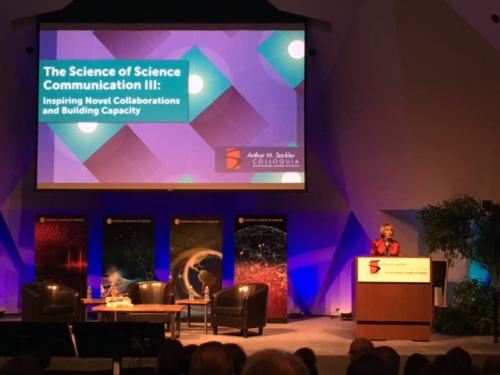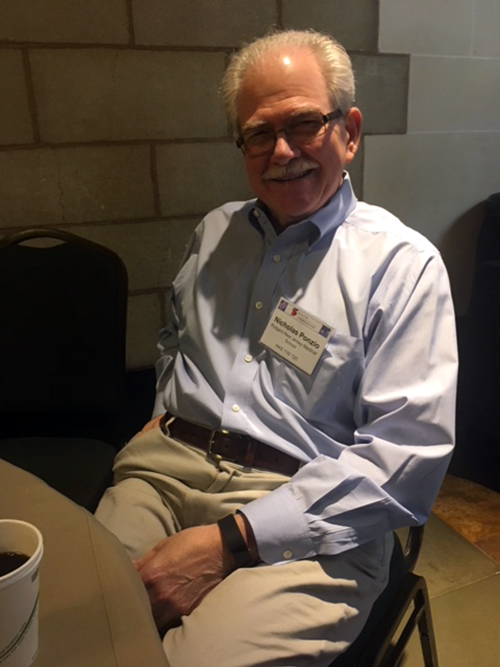Science of Science Communication IV: What Future Conferences Should Consider
Bill Dennison ·Suzi Spitzer, Vanessa Vargas and I attended the Science of Science Communication III conference hosted by the National Academy of Sciences in November 2017. The conference tackled many relevant concepts and brought social scientists into the conversation. But there were a few topics that a conference focusing on the science of science communication could have included. For future conferences there are three topics that I would like to see covered in the future: cognitive studies of information processing, science visualization techniques and approaches, and storytelling analysis and interpretation.

Cognitive studies of information processing. The neurobiology of information processing provides the scientific underpinning of information processing. The use of storytelling techniques that evoke different aspects of the neocortex vs. the limbic system are crucial in invoking emotion, cognition and long term memory. These visual and auditory inputs influence the audience in fundamental and profound ways. For example, how people visually perceive images, the effect of color on interpretation, and facial recognition that conveys emotion are all visual cues that the audience gathers. We need to develop a better understanding of how they work in order to become more effective science communicators. This biological basis of science communication is not currently utilized in the development of theories.
Science visualization techniques. The importance of graphs, charts, conceptual diagrams, maps and photographs in conveying complex scientific information is paramount for effective science communication. This has been true throughout the history of science, from Galileo’s drawings of the moon, to Newton’s drawings of light prisms, to Darwin’s drawings of finches and Watson and Crick’s model of the structure of DNA. More recently, the Keeling curve of rising carbon dioxide levels is one of the few unchallenged graphics in the climate change debate. We should study how and why these well-known images and graphs are effective so that scientists can become better communicators.
Storytelling and analysis. The crucial importance of storytelling has been emphasized in all three Science of Science Communication conferences. However, there has been very little discussion of what makes a compelling and memorable story. Randy Olson’s latest book Houston, We Have a Narrative addresses this issue directly. For example, the “ . . . and . . . but . . . therefore . . .” (ABT) template that Randy advocates provides a rubric for developing a storyline. Randy and I have done some analyses of the ABT effectiveness through a narrative index, covered in previous blogs. The “Hero’s Journey” is another storytelling technique that is acknowledged for movies and books, but rarely applied to science communication.
There are 2 other aspects of the Science of Science Communication conference that I recommend for future conferences. One is the use of better science communication practices for speakers and the other is better participation of audience members.

Better science communication practices: Each speaker should be vetted ahead of time, and have a panel of reviewers to provide constructive critical review. My suggestions include clear and visible graphics and doing more than just reading text off of PowerPoint slides. The presentations at a Science of Science Communication conference at the National Academy of Science ranged from sharp, thought-provoking lectures similar to TED talks, to those that simply were shockingly bad at effectively discussing science communication. All talks should be tested on the projection equipment on site prior to giving the talks. TED talks would worth emulating is terms of their conciseness, clarity and speaker preparation.
Better participation of audience members. One of the best parts of the Science of Science Communication conference was the breaks where I met various other science communicators. The talent pool in the audience was amazing, including practitioners who regularly communicate science and train others in science communication (e.g., Compass, Alan Alda Center for Communicating Science). The audience participation was limited to a few questions to the assembled panels and I think it was a missed opportunity to not include more input from the audience. Future conferences would benefit from break out sessions, more extended question and answer sessions with questions visible to the entire audience, poster sessions and other means of being more inclusive.
These critiques may sound negative, but the Science of Science Communication III conference was engaging and educational. What I am aiming to do is stimulate a conversation on how to improve these conferences so that we can all understand and become better science communicators and teachers.

About the author
Bill Dennison

Dr. Bill Dennison is a Professor of Marine Science and Interim President at the University of Maryland Center for Environmental Science (UMCES).